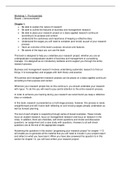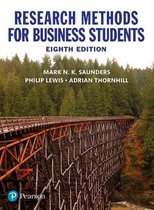Summary
Summary Research & Design (BUAS) year 1
- Course
- Institution
- Book
Summary and 'cheat sheet' for the R&D exam. Contains a summary of the books: 'Research methods for business students' and' Design. Think. Make. Break. Repeat ', elaborations of the lectures, workshops, and videos, and additional information about the Stanford Design Thinking Process. Good luck! In ...
[Show more]




